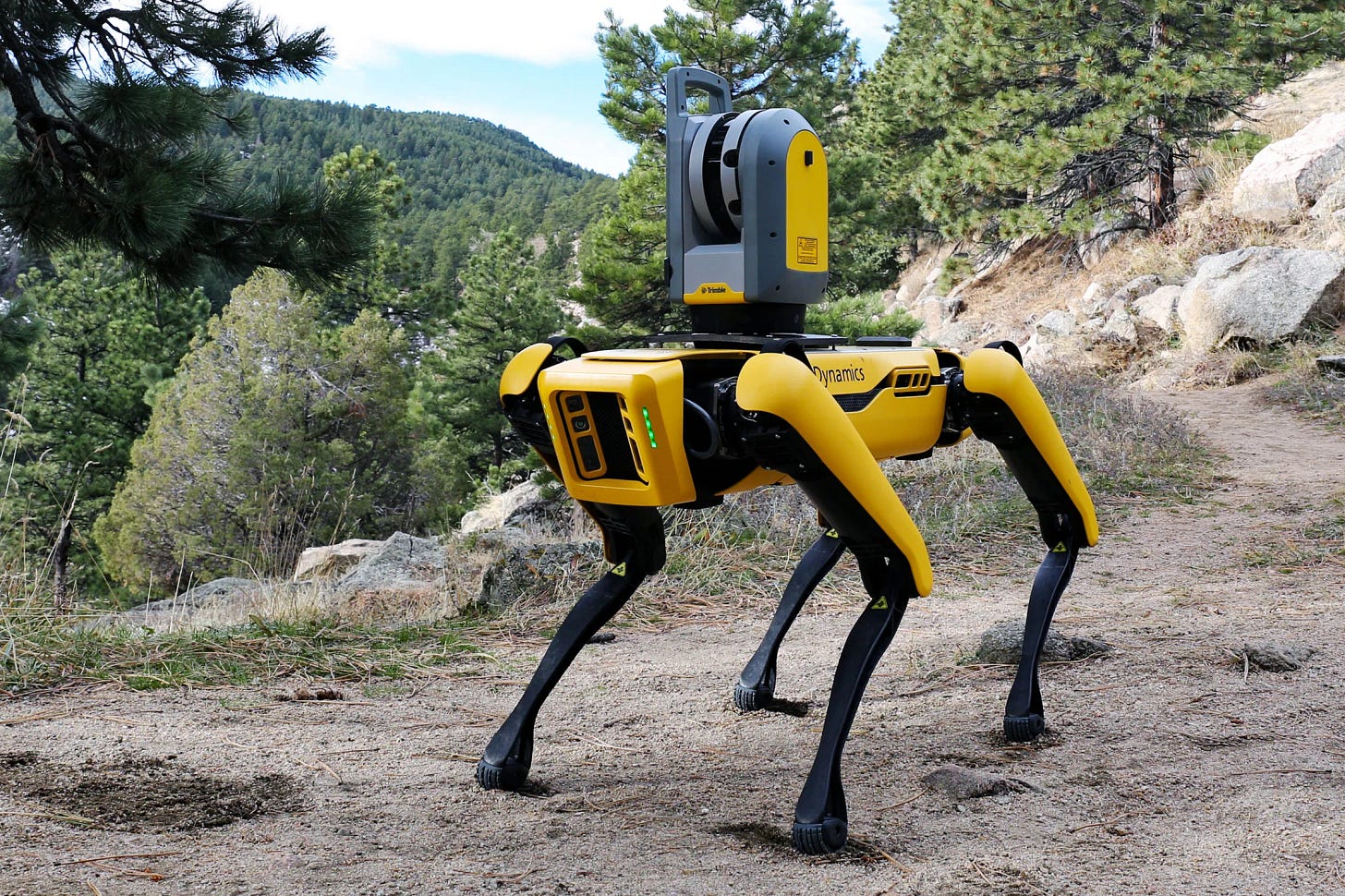Let’s Talk for a Second About the Robot Dogs
I’m sure we will come back to this now and again, but has anyone else noticed all the awful Terminator 2 things happening in the world that seem to pointing directly to the heart of our future?
Since its spinoff from an advanced engineering lab at MIT 20 years ago, Boston Dynamics has been working on bi-pedal and quad-pedal robots that do everything from stocking warehouses to being used as weapons of war. The technology was both so cutting edge and dangerous that it even served as the basis for the multi-dimensional crime-mystery-X Filesish-futurist show Fringe.
Boston Dynamics founder Marc Raibert once stated that his dream was to “advance bipedal and quadrupedal robots to a supernatural state.” He has certainly done that.
Black Mirror’s idea of what a robot dog might look like in the near future
In 2005 the company created “big dog” a pony sized four legged robot that could run at 4 mph and carry up to 250 pounds. Currently a newer, smaller model named Spot is getting some limited press attention as it’s recently been purchased by several major metropolitan police departments.
The program has received strong backing from the Defense Advanced Research Projects Agency, known as DARPA. In 2013 Boston Dynamics released a video of Big Dog with an attached arm that can pick up and throw up to 50 lbs of material. These machines can be controlled by human voice commands and were able to traverse about 80% of terrain without falling over. When they did fall they were usually able to right themselves and get back up. Big Dog was shelved for now because it was too loud. Apparently a bunch of leading MIT scientists can take a dog to water… err, war, but they can’t make swim (quietly).
A 2017 episode of the dystopian television show Black Mirror presented a possible future for these robots. The characters came across a robot guard dog who sprays them with shrapnel that contains trackers. One of the characters was able to outwit the dog. When it traps her in a tree she distracts it until it’s solar powered battery runs out of charge. When it comes back to life the next morning and finds her again she throws paint on it’s sensors to blind it. It shoots air burst shell that showers her with trackers, including one that slices one of her major arteries. As she bleeds out the camera pans back so the audience can see dozens of other dogs responding to the tracker signal.
Seven years later it’s past the time that we start to ask some serious questions about this technology. Robot dogs are finally beginning to be deployed in a serious way. They are being trained as replacements for many blue collar jobs like warehouse workers. Police departments in Los Angeles, Boston, Houston, New York, and other cities now have these robot dogs as part of their police departments, helping with things like hostage negotiations and finding missing persons. Many people have raised issue and objected to having these as owned or used by police or the military. They are quietly ignored and their concerns suppressed and minimized.
Spot has already been used to defuse a bus hostage situation. Officers waited for the hostage taker to fall asleep and they sent in spot to carefully pluck his gun out of his reach.
Spot
When we take a step back, can’t we imagine both how banal and threatening these things can easily become? Banal because after a few years they will be just another piece of tech that fades into the background of our collective consciousness. Most of us will either forget they exist or begin to view them as a tool instead of a danger. They will become all too normal.
Threatening because, well, they are threatening. Of course, some embrace the outright militarization of their technologies. University of Pennsylvania spinoff Ghost Technologies has been sending robot dogs to the Israeli armed forces to be used in their war against Palestinians living in the Gaza Strip.
“All we’re trying to do is allow them to use our robot in military and other government agency applications to keep our people from getting hurt,” co-founder Jiren Parikh said. “If it’s a weapon that they need to put on our robot to do their job, we’re happy for them to do that.”




